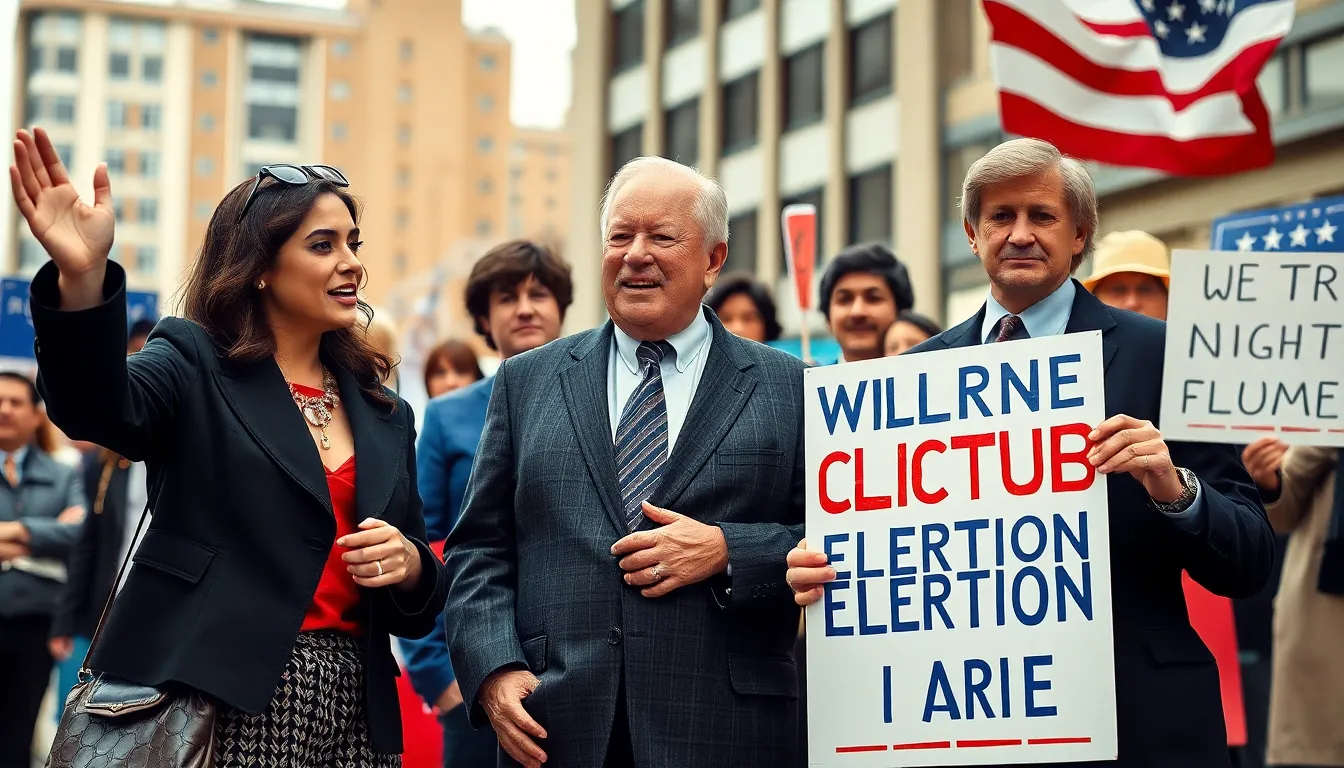As the dust settles from the 2024 election, everyone’s buzzing about one question: what was the popular vote? It’s not just a number; it’s a snapshot of the nation’s mood, a reflection of hopes, dreams, and the occasional pizza order at 2 AM. Understanding the popular vote helps unravel the tangled web of political preferences, revealing what really matters to the American people.
Table of Contents
ToggleOverview of the 2024 Election
The 2024 election marks a pivotal moment in American politics. Various candidates compete across different parties, each presenting their vision and policies. Voter participation plays a critical role in shaping the outcome. High engagement levels reflect increased interest in political matters.
Numerous issues dominate the landscape, including the economy, healthcare, and social justice. Polling data shows that these topics resonate strongly with voters. Candidates tailor their messages to align with public concerns, hoping to capture the popular vote. Understanding the voting demographic proves essential.
According to recent surveys, younger voters display heightened political awareness. Issues like climate change and education reform motivate their participation. Middle-aged and older voters prioritize stability and economic growth, influencing their choices as well. Each demographic group contributes uniquely to the overall voter landscape.
Regional differences also affect voter preferences. Urban areas lean towards progressive policies, while rural locations may favor traditional viewpoints. These geographical distinctions highlight the diversity within the electorate.
Tracking the popular vote leads to revealing insights about national sentiments. It illustrates the collective attitudes, aspirations, and discontent among the populace. As election day approaches, the dynamics of voter engagement will continue to evolve, emphasizing the importance of the popular vote in determining the future direction of the country.
Key Candidates and Their Campaigns

The 2024 election features a diverse array of candidates, each articulating distinct visions and policies that align with voter preferences.
Major Party Candidates
Democratic candidates focus on progressive reforms, tackling climate change and healthcare accessibility. They prioritize social justice and economic equity, appealing to younger and urban voters. Republican candidates emphasize traditional values and economic growth, resonating with middle-aged and older demographics. Their campaigns highlight national security and fiscal conservatism. Both parties engage in debates, assessing how their platforms align with voter concerns leading up to the election.
Third-Party Candidates
Third-party candidates aim to provide alternatives to the major political parties. Their platforms often reflect niche issues such as electoral reform and grassroots democracy. Independent candidates attract attention from disillusioned voters. Libertarian candidates advocate for minimal government and individual freedoms, appealing to those prioritizing personal choice. Green Party candidates emphasize environmental sustainability and social justice, targeting an audience committed to climate action. Each of these candidates seeks to capture a segment of the electorate that feels underrepresented, influencing the overall dynamics of the election.
The Popular Vote Breakdown
The popular vote provides critical insights into voter preferences in the 2024 election. Analyzing the data reveals significant trends across states and demographics.
State-by-State Analysis
State-by-state results illustrate varying voter inclinations. California’s urban centers lean heavily Democratic, reflecting progressive values. Texas, on the other hand, showcases a strong Republican presence, particularly among rural voters. Battleground states like Pennsylvania and Wisconsin demonstrate pivotal moments where both parties aggressively campaigned. Each state’s results contribute to the national picture of the popular vote, highlighting regional differences and the importance of localized issues.
Demographics of Voters
Demographic trends reveal distinct voting behaviors among groups. Younger voters prioritize climate action and inclusive policies while engaging more with Democratic candidates. Middle-aged voters often emphasize economic stability and national security, aligning closely with Republican messages. Older voters may show varying affiliations, depending on their specific concerns, from healthcare to social issues. Additionally, minority groups increasingly influence election outcomes, underscoring the necessity for candidates to address diverse community needs and values.
Factors Influencing the Popular Vote
Understanding factors influencing the popular vote shapes insights into voter behavior during the 2024 election. Many elements guide how different demographics approach their voting choices.
Economic Conditions
Economic stability significantly impacts voter sentiment. In 2024, issues such as inflation, unemployment rates, and wage growth resonate deeply with the electorate. Candidates addressing these factors attract voters seeking tangible solutions. For example, individuals affected by rising costs prioritize policies promoting financial security. An economy perceived as struggling can push undecided voters toward candidates promising robust economic recovery plans. Voters often evaluate candidates based on their track records in handling economic challenges, creating a direct link between candidate credibility and voter preference.
Social Issues and Their Impact
Social issues carry weight in shaping the popular vote. Topics like healthcare access, education reform, and social justice play critical roles in influencing voters’ choices. Candidates addressing these issues through progressive policies often gain traction among younger voters. Specific issues like climate change unify many voters, prompting a desire for immediate action. Moreover, the push for equality and inclusion attracts diverse demographic groups, influencing overall voting trends. When candidates demonstrate a commitment to these social concerns, they can mobilize passionate supporters who value these matters deeply.
Reactions to the Popular Vote Results
Reactions to the popular vote results reflect a dynamic political landscape. Many voters express strong sentiments about their choices, showcasing a divided nation.
Public Opinion
Polling data indicates widespread engagement among different demographics. Younger voters prioritize climate change and healthcare, reflecting their urgent concerns. Their enthusiasm drives higher participation rates. Older voters, however, tend to focus on economic stability and national security, influencing their preferences. Regional variations highlight divergent opinions; urban voices often align with progressive policies, while rural communities lean toward traditional values. This polarization motivates candidates to tailor their messages accordingly, appealing to the specific needs of their constituents. The overall public sentiment demonstrates how critical issues shape collective attitudes.
Political Commentary
Political analysts note that the popular vote serves as a predictive tool for future elections. Commentary surrounding the results emphasizes the significance of demographics and key issues. Candidates should recognize that shifting voter priorities can dramatically influence strategies. Many observers highlight the impact of social justice, healthcare, and economic concerns in shaping debates. Pundits encourage a focus on inclusivity as minority populations wield increasing influence. Recognizing these factors can assist candidates in refining their messaging. Overall, political commentary illustrates the necessity for adaptable campaign strategies that resonate with voters’ evolving priorities.
The popular vote in the 2024 election reveals a complex tapestry of American political sentiment. As candidates vie for support, understanding these voting trends becomes essential for grasping the nation’s priorities. Voter engagement across demographics highlights the pressing issues that resonate with the electorate.
The influence of economic conditions and social justice concerns cannot be overstated. As the political landscape evolves, the popular vote serves as a crucial indicator of the collective aspirations and values of the American people. Observing these trends will be vital in shaping future elections and understanding the dynamics of a changing nation.




